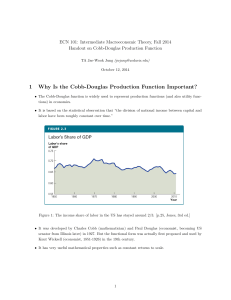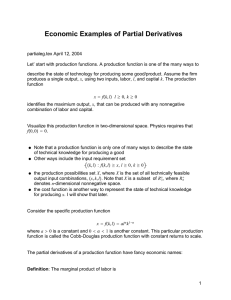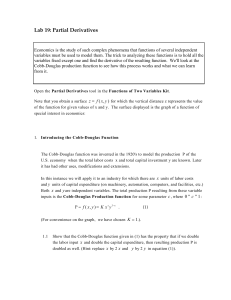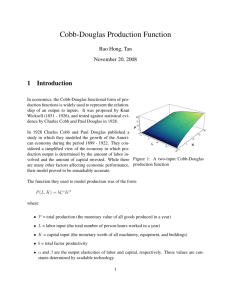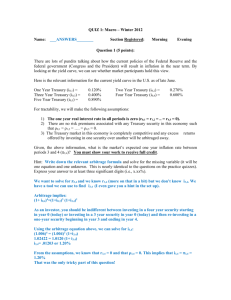Derivation of Constant Labor and Capital Share from
advertisement
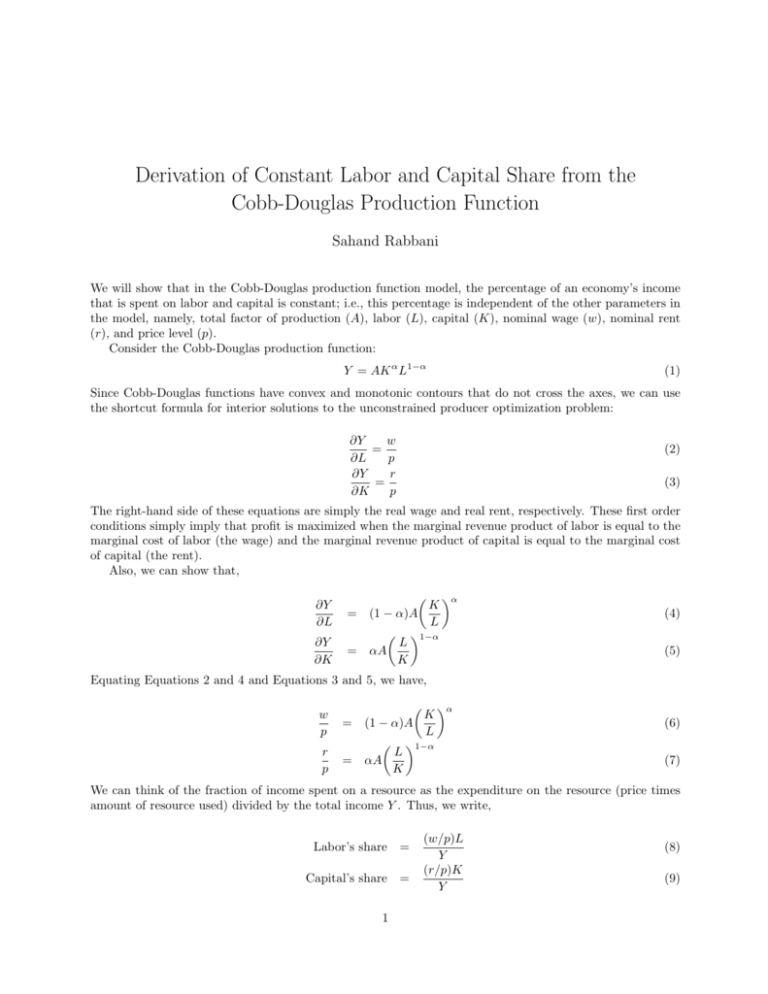
Derivation of Constant Labor and Capital Share from the Cobb-Douglas Production Function Sahand Rabbani We will show that in the Cobb-Douglas production function model, the percentage of an economy’s income that is spent on labor and capital is constant; i.e., this percentage is independent of the other parameters in the model, namely, total factor of production (A), labor (L), capital (K), nominal wage (w), nominal rent (r), and price level (p). Consider the Cobb-Douglas production function: Y = AK α L1−α (1) Since Cobb-Douglas functions have convex and monotonic contours that do not cross the axes, we can use the shortcut formula for interior solutions to the unconstrained producer optimization problem: ∂Y w = ∂L p r ∂Y = ∂K p (2) (3) The right-hand side of these equations are simply the real wage and real rent, respectively. These first order conditions simply imply that profit is maximized when the marginal revenue product of labor is equal to the marginal cost of labor (the wage) and the marginal revenue product of capital is equal to the marginal cost of capital (the rent). Also, we can show that, ∂Y ∂L ∂Y ∂K α K = (1 − α)A L 1−α L = αA K (4) (5) Equating Equations 2 and 4 and Equations 3 and 5, we have, w p r p α K (1 − α)A L 1−α L = αA K = (6) (7) We can think of the fraction of income spent on a resource as the expenditure on the resource (price times amount of resource used) divided by the total income Y . Thus, we write, Labor’s share = Capital’s share = 1 (w/p)L Y (r/p)K Y (8) (9) S. Rabbani Derivation of Constant Labor and Capital Share Substituting Equations 6 and 1 into Equation 8 and Equations 7 and 1 into Equation 9, we have, Labor’s share Capital’s share = = (1 − α)A K α L AK α L1−α L 1−α K αA K AK α L1−α L =1−α =α This is a remarkable result: regardless of the amount of labor or capital used, or their relative prices, the share of income spent on labor will be a constant 1 − α while the share of income spent on capital will be a constant α. This is one of the many features of Cobb-Douglas production functions that mirror empirical trends and make Cobb-Douglas an attractive model. 2
